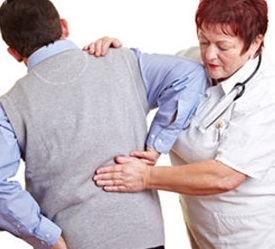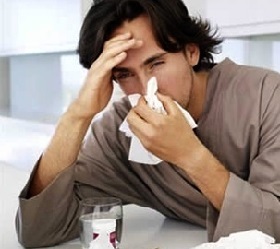 A cyst is a benign formation in the right or left kidney, which appears to be a saccular capsule filled with fluid. Among all renal formations, it is the cyst that occupies a leading place in the number of detections.
A cyst is a benign formation in the right or left kidney, which appears to be a saccular capsule filled with fluid. Among all renal formations, it is the cyst that occupies a leading place in the number of detections.
Most often diagnosed as a single neoplasm, which can be formed on the upper or lower pole of the organ, while the size of the cyst can reach 10, and a larger cm.
This diagnosis requires constant medical supervision. In the absence of developmental dynamics, the patient can do without treatment. In some cases, the process may be inflammatory, and as a result, surgical intervention is required. In addition, compulsory treatment is required in cases of malignant degeneration of the cyst. What to do, so that the cyst on the kidney will resolve only an experienced doctor.
What it is?
Cyst is a cavity filled with liquid. It can have a different structure and be located in different places of the kidney. So, depending on the localization, the following types of cysts are distinguished:
- Parenchymal. It is located in the tissues of the kidney.
- The cortical cyst is located in the cortical layer.
- Subcapsular is found under the capsule.
- Okololohankochnaya is located near the pelvis, but does not communicate with it.
- A multi-chamber cyst may occupy different parts of the kidney.
By nature of origin, cysts are congenital or acquired, so the causes and treatment of cysts may differ.
Causes of a cyst in the kidney
Despite the fact that the cyst of the right and left kidneys is not so rare, the causes of this pathology are still not fully understood by scientists and doctors. Most often these are congenital formations, but they can also be formed after birth.
It is generally accepted that there are kidney cysts due to hereditary, traumatic or infectious factors. And the complexity of reliable detection of causes is further exacerbated by the fact that the disease, as already said, occurs without specific symptoms.
The development of cysts occurs from the renal tubules, they lose contact with other tubules and kidney structures after increasing in size to several millimeters. The reason for the development of this process is the increased growth of epithelial cells that line the kidney tubules from the inside.
Symptoms
Cysts that are in the kidneys often do not appear. It is possible to live for years with this pathology and do not know anything about its existence. However, if the cyst begins to grow and stretch the capsule more, small pain develops, which can be more simply called uncomfortable and there is a heaviness in the lumbar region.
Sometimes there is a pain syndrome associated with the pressure of the cyst on the muscle of the waist. The most common symptoms are kidney cysts, like those arising in the lumbar region or in the hypochondrium, dull pains that increase after exercise.
Early symptoms of kidney cysts are as follows:
- pain in the lumbar region;
- enlarged bladder;
- frequent urge to urinate;
- kidney infection;
- urolithiasis disease;
- in some cases, hypertension, abdominal pain, and sometimes anemia;
- cysts can spread from the kidney to other internal organs - primarily the liver, bladder, ovaries, pancreas and spleen.
By the way, if the pain is localized mainly on the right side, then the cyst of the right kidney is diagnosed, respectively, if it hurts on the left - the left cyst.

Treatment of kidney cyst
Before the appointment of a particular type of treatment, the doctor, if suspected of a cyst of the right or left kidney, directs the patient to undergo a comprehensive examination. The diagnosis is established taking into account the patient's complaints. In general, the question of how to treat the kidney cyst is decided by the urologist individually, taking into account the localization, size and type of cyst.
So, with a diagnostic examination, a kidney cyst was detected - what should I do?
- The most common tactic of maintaining a cyst of the kidney is expectant. It implies constant dynamic control of neoplasm. If in the course of such control an increase in the cyst is detected, operative treatment is applied. The latter is also used when the cyst interferes with the normal functioning of the kidney.
- Treatment of a kidney cyst without an operation is that a cyst puncture is performed - a puncture followed by removal of the fluid and the introduction of sclerosing agents (drugs that contribute to the collapse and fusion of the connective tissue membrane of the cyst).
- Removal of the left and right kidney cyst by means of laparoscopic surgery is a low-traumatic, modern way, due to which pathological formations are completely removed. This technique involves the implementation of a radical operation, but it is minimally invasive (3 sections of 5 mm are made on the abdominal wall).
It is not always necessary to treat the kidney by a surgical procedure. If it has small dimensions, is not complicated and does not accompany other pathologies, it is possible to do without an operation.
How to treat a cyst in the kidney folk remedies?
Treatment of the kidney cyst by folk remedies is carried out at the stage of dynamic observation of education or when the operation can not be carried out. Together with plant infusions and broths it is desirable to use medicines.
- For sure, almost everyone heard feedback about howburdock juicehelps in the treatment of kidney cysts, but not many understand how probably a folk remedy to produce. Cut a few burdock leaves, stir them in a meat grinder, shift them onto a gauze and squeeze out the juice. Keep it in the refrigerator, but not longer than a day. That is, every day you need to prepare a new juice. The course of treatment lasts two months, during this time, three times a day should be taken juice before eating, literally a couple of tablespoons.
- Golden mustacheYou can insist on vodka (need to take 50 joints) 10 days. Tincture is taken 2 times a day on an empty stomach. The reception takes place according to the scheme: on the first day 10 drops of tincture diluted in 30 ml of water are taken, each subsequent day the dose of the tincture is increased by a drop, that is, on day 25 35 drops are taken. Then the reception goes in the reverse order, every day the dose is reduced by a drop. The last use of the tincture is 10 drops.
With such a kidney disease as a cyst, in addition to traditional medication treatment and surgical intervention, the patient is also shown a special diet. It assumes the basic principles of nutrition, among which:
- restriction of salt;
- control over the liquid being drunk;
- refusal of "harmful" food;
- observe low-protein food.
Compliance with a special diet for diseases of the urinary tract, including the presence of a kidney cyst, is one of the important components in the treatment of these pathologies.

How to choose probiotics for the intestine: a list of drugs.

Effective and inexpensive cough syrups for children and adults.

Modern non-steroidal anti-inflammatory drugs.

Review of tablets from the increased pressure of the new generation.
 Antiviral drugs are inexpensive and effective.
Antiviral drugs are inexpensive and effective.



